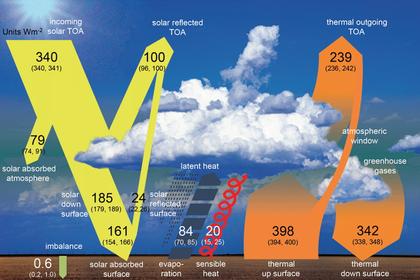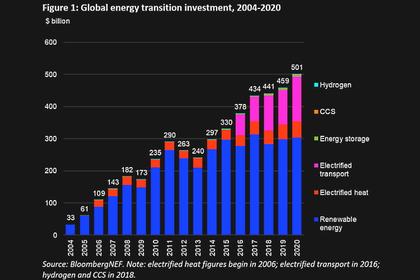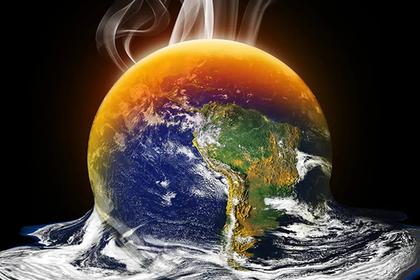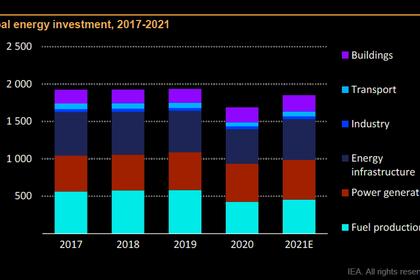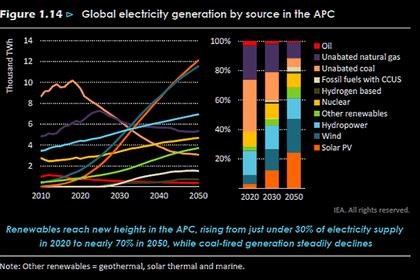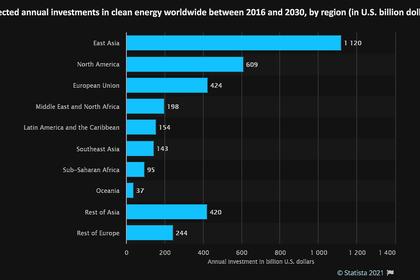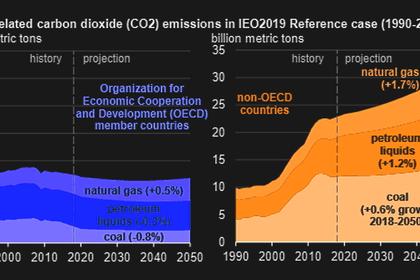
RENEWABLES FOR CITY
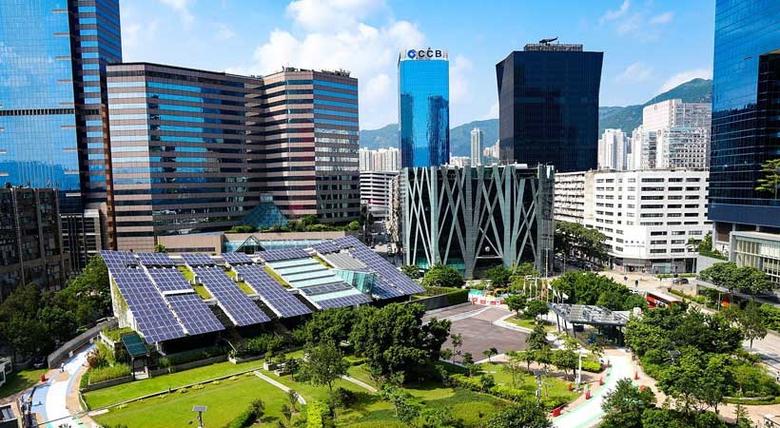
By NIYIRETH TORRES urban Planner Renewable energy enthusiast
ENERGYCENTRAL - Jun 24, 2021 - When I look at a city, I do not see a densely populated, sizeable human settlement; I identify a place that breaths life and has endless possibilities of culture, interactions, innovation, and economic opportunities. The appeal of living in cities is residing in administrative, commercial, religious, and cultural hubs throughout the years. These interactions of communities have brought growth, advancement, and innovation.
Cities are classified into four sizes:
- Small city populations start at around 100,000 people.
- Medium city populations are less than a million but over 300,000 people.
- Large cities are more than one million residents.
- Megacities total population of more than 10 million people.
Issues of a Large City
This past year has been a whirlwind for large cities with the pandemic, with a significant exodus of residents, talents, and life. People have been moving to smaller and medium-sized municipalities due to remote working opportunities, affordability, and quality of life. Raising the question: Are large cities ever coming back?
Large cities have always had problems, and unfortunately, it has worsened with the pandemic. With a large population and continuous migration shifts, cities have struggled with:
- Fiscal difficulties: Paying for the essential services of policing, public education, trash removal, street maintenance, and in the case of colder climates, snow removal. More impoverished communities or disabled residents, or other underserved communities, face even more difficulty accessing certain services.
- Crowding: This involves residential crowding and household crowding. Residential crowding refers to a large population live in in a small space. An example of this is New York’s borough Manhattan, with roughly 1.6 million people living in 24 square miles. That is about 68,000 people per square mile. Meanwhile, household crowding refers to many people living in close quarters within a particular dwelling unit. Apartments and houses are typically smaller than houses in rural or suburbs.
- Housing: This involves several issues: a. Substandard housing referring to an accommodation with broken windows, malfunctioning heating systems, peeling lead paint, and insect infestation; b. No affordable housing refers to high housing prices in cities. For accommodations to be reasonable, a household pays no more than 30% of its annual income. Low-income families spend more than this benchmark, making basic needs unaffordable; and c. Homelessness is a related problem to housing. Millions worldwide live in the streets, abandoned vehicles, or temporary housing. Homelessness is not a poverty issue; multiple issues can cause it: lack of affordable housing, a natural disaster, a fire, eviction, mental health issues, disability, domestic violence, and military veterans.
- Traffic and Transportation: With so many residents, there are mobility issues. People needing to travel for work, school, stores, or any other leisure setting can take an hour or longer to travel in traffic. It can cause a traffic gridlock, where traffic from all directions is barely moving or not moving at all. Cities have implemented public transportation to avoid this, such as busses, subways, and light rails. The quality of public transportation varies between cities, but even cities with good public transit still struggle with traffic congestion, long commutes, and related issues.
- Air pollution: Caused by traffic congestion, factories, and other enterprises that also pollute. Air quality is substandard, resulting in significant health consequences, producing higher respiratory, heart disease, and mortality rates.
- Public education: City schools are underfunded, causing them to lack current textbooks, adequate science equipment, other instructional materials and housed in old buildings that are falling apart.
- Crime: There are higher rates of violent and property crime than in small towns or rural areas. Crime rates tend to higher due to higher population density and household crowding. There is a much greater chance for interactions that might result in aggression due to a perceived insult or other problems that can lead to violence.
The Opportunities
More than half of the world's population lives in cities. Due to globalization, cities significantly influence global issues, such as global warming, global health, and sustainable development. Cities are in the unique position of being part of global warming and being part of the solution.
They cause urban heat islands, concentrate pollution, account for 70% of greenhouse gas emissions, consume two-thirds of the global energy consumption, and stress water supply. Add to that the consequences of the pandemic, with the economic turmoil, the shortages of goods and services caused by closed factories, closed borders, disrupted supply chain, and problems in transportation. It highlighted the need for healthy public spaces, increased manufacturing locally, delivery services, and increased need for connectivity (internet), resulting in the higher electricity demand.
On the other hand, city residents are part of the solution with minor land consumption, ecological impact, and efficient transportation, with bike lanes and public transit. Also, there is increasing awareness of environmental issues and the need for renewable energy.
There are multiple opportunities for cities to implement renewable energy alternatives to diversify their existing grid. With the increasing need for technology, cities must find alternatives to traditional forms of producing electricity since they require more space, have a larger carbon footprint, and takes longer to implement.
I have chosen multiples forms of renewable energy that are plausible to implement in the existing built environment, enhancing the city living experience. Including:
- Biogas: Cities will always produce waste, especially in North America, with an average of about 5 lbs. (2.21 Kg) of waste per person per day. That is the highest average amount of waste per capita. High-income nations and economies are more urbanized and generate more waste per capita. North America has the most significant urbanization rate at 82%, generating 14% of the world's waste, with 5% of the global population. Knowing this, reducing plastic waste, optimizing the waste collection, and implementing biogas in a city is an excellent solution to the waste issue and a great way to generate energy, promoting a circular economy.
- Kinetic energy: In an area with high mobility and limited space, kinetic energy is a good solution. High trafficked areas with pedestrians, bike lanes and roads, can install kinetic plates to absorb the energy to convert them into energy.
- Wind energy: When you think about wind energy, you think of wind farms in rural areas or the ocean, but with advances in technology, installations of a vertical axis wind turbine can be done in urban areas.
- Solar: This involves applying panels and photovoltaic materials on roofs, which are efficient, non-obstructive, and low maintenance.
-----
This thought leadership article was originally shared with Energy Central's Clean Power Community Group. The communities are a place where professionals in the power industry can share, learn and connect in a collaborative environment. Join the Clean Power Community today and learn from others who work in the industry.
-----
Earlier:
